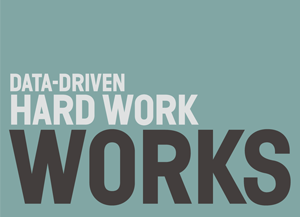There is an emerging opportunity for collaboration in the cultural heritage sector, as archeologists around the globe call for new methodologies to process mass-information about cultural heritage sites. This article unpacks how satellite imagery and geographical information systems are shifting the structure of the cultural heritage sector.
Social Listening: Real World Applications
Social Listening: Are You Taking Advantage of it?
Learning From Leaders: Data Practices in the Opera Industry
How are marketing departments at large American Opera institutions using their data? This new Whitepaper by AMT-Lab Contributor Kevin O'Hora uses four case studies to paint a picture of how companies are using data acquired by their website. Full of insights for marketing departments across disciplines, this publication includes software recommendations as well as general strategies and best practices applicable to any arts marketer.
How Can Google Analytics Solve Operational Challenges?
Though often used to analyze traffic and commerce, Google Analytics is a powerful tool whose applications are near-limitless. In this new handbook, AMT Lab contributor Kathleen Grennan illustrates a number of ways in which arts managers of all types can use Google Analytics to make data-driven decisions in operational settings. From obtaining new audiences to bolstering fundraising efforts, this is a good introduction to this flexible tool. Click here to find the full report.
Operatic Analytics
It is easy to see the ways that the production and consumption of opera have changed to match the needs of the 21st century consumer. However, it is difficult to identify similar changes reflected in the way that opera is managed. Opera companies have altered the product they are offering, but have they come up with new metrics to measure and manage their success?
Data That Matters: Three More Metrics to Grow Audiences and Revenue
This article is cross-posted on the blog Analysis from TRG Arts.
Read the first post in this two-post series here.
Last month, I wrote about the overwhelming amount of data produced by the sophisticated database systems now common in the arts industry. My commentary on the “analysis paralysis” that can result caught the attention of many of our readers. We’re glad, because 20 years of consulting work has taught us this: data-driven hard work works.
Data That Matters: Three Metrics to Grow Audience Relationships
This article is cross-posted on the blog Analysis from TRG Arts.
With the arts and cultural annual conference season in full swing, we’re thrilled to see the priority that integrated patron loyalty now has in field dialogue. Prioritizing patronage can have a real impact—on year-over-year revenues, the volume of people attending and visiting arts and cultural organizations, organizational relevance, and more.
Data-Driven Decisions for Arts Marketers
AMTLab contributor Christine Sajewski discusses strategic uses of internal arts marketing data, as illustrated through a hypothetical performing arts organization, the Ugly Duckling Ballet. Read the full report here.
Research Update: Making Data-Driven Decisions
Once arts organizations have identified data sets available to them internally (e.g., ticket sales, website analytics), it is important to recognize that these channels do not operate alone. How can marketers in arts organizations look at these multiple data sources, including new media channels, to conduct a more meaningful analysis? As a starting point, they can identify connections between their internal data sources and articulate goals for each relationship.
News Summary 11.2013
Research Update: Using Spatial Data to Advance our Programming Missions – Where will I get the data?
As I continued to research how arts organizations can use spatial data to advance their programming missions, and looked at the volume of data already available, numerous scenarios come to mind. Spatial data can be used to evaluate a traveling exhibition proposal or a public art site, develop a grant-making or educational program, or identify potential partnerships.


















